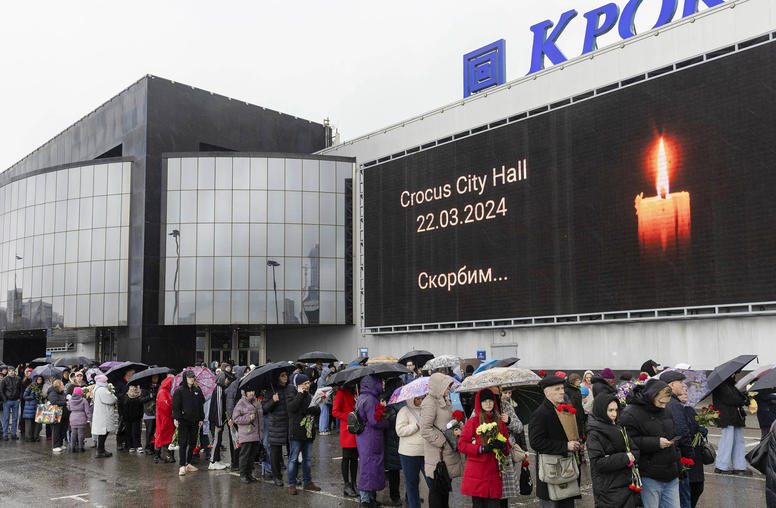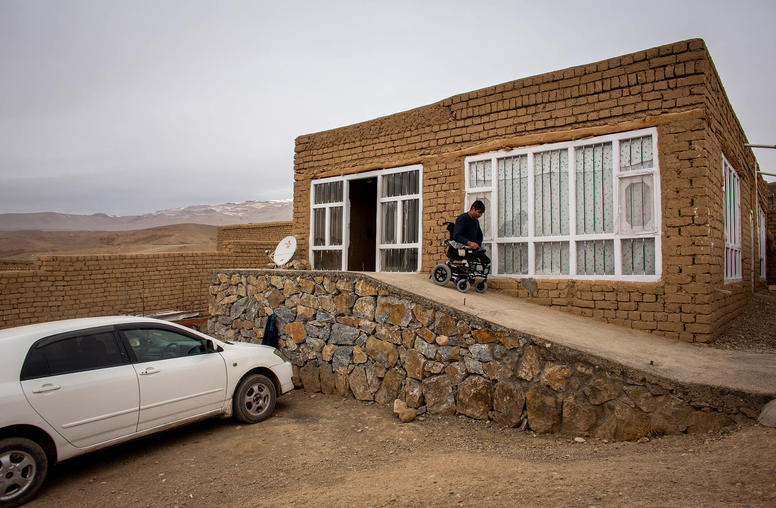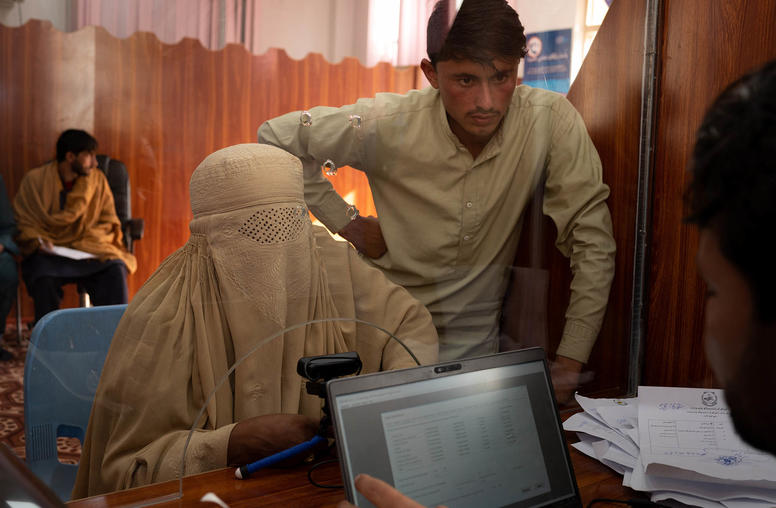Afghanistan’s Fourth Estate: Independent Media
Afghanistan’s media have evolved at warp speed since the fall of the Taliban in 2001, yet being a journalist remains an extremely dangerous occupation, as many have been killed and still more threatened with violence if they persist in their work. The growth of Afghanistan’s democracy depends on a functioning media. This report examines the situation and offers paths forward to making Afghanistan safer for journalism.
Summary
- Over the last decade, Afghanistan has experienced the rise of a robust media sector. Programming fills the airwaves with everything from news to comedy, open debate to open audition, soap operas to police dramas to ABCs.
- Journalists, however, operate in a climate of fear and insecurity, under threats of reprisal and violence, with insufficient state support for freedom of the press.
- The National Unity Government’s pledge to promote good governance and fight corruption cannot succeed absent a free and independent media.
- President Ghani and CEO Abdullah’s campaign pledges to support freedom of speech and press freedom must be backed up by actions, including passage of a mass media law that protects freedom of speech and the personal safety of journalists.
About this Brief
A survey of media programming in Afghanistan has quickly yielded not only a picture of a vibrant sector with a wide range of offerings but also an understanding of the challenges facing the talented and courageous media professionals who strive every day to rebuild and sustain a truly independent media sector that serves all Afghans with news and information. Thanks to all who shared their knowledge with the author; in particular, huge thanks to Mujeeb Khalvatgar, managing director of Nai, Supporting Open Media in Afghanistan, and Danish Karokhel, director of Pajhwok Afghan News, for allowing me to interview them and to use portions of those interviews in this article. Ann Procter is a senior program officer with USIP’s South and Central Asia team. She has worked in postconflict countries as a program officer and communications specialist for the past decade.
Introduction
In the past fourteen years, Afghanistan’s media sector has evolved at warp speed. In a country with one of the world’s lowest literacy rates, radio and television serve the population with news and information otherwise obtainable only in print. Under Taliban rule (1996–2001), secular radio was silenced and television programming—which had debuted in 1964 with the government-owned Radio Television Afghanistan (RTA) but plunged into decline in the 1990s as civil conflict overtook the country—was forbidden. One religious radio station, Voice of Sharia, remained open during those years under strict Taliban guidelines. Radio Kabul, founded in 1925 and recast as Voice of Sharia during Taliban rule, reopened with the Taliban’s overthrow in 2001. By 2015, Afghanistan had 174 radio stations, 68 private television stations, 22 state-owned provincial channels, and RTA, all adding up to a media juggernaut.1
Media Programming
The country’s 174 radio stations are prime vehicles for conveying messages, information, and entertainment, particularly across rural Afghanistan. An estimated 77.4 percent of Afghans claim radio as their primary source for obtaining news and information. Television has recently trumped radio in urban areas, but radio remains “the most widely used source for obtaining news and information in Afghanistan,” according to The Asia Foundation 2014 Survey of the Afghan People.
The Moby Group was established in 2003 with early support from international donors, opening the country’s first private radio station. Moby has grown in the past decade into “a diversified portfolio of 16 businesses and six markets…serv[ing] over 300 million people from Central Asia to North Africa.” TOLO TV claims a 59 percent market share in Afghanistan’s media market.2 The Killid Group, led by award-winning journalist Najiba Ayubi, opened its first radio station in Herat in 2005. Today, the Radio Killid Network manages eleven radio stations in seventeen provinces, including the country’s first all-rock station, with reach across the country to twelve million listeners.3
As the country emerges from decades of conflict, new Afghan media programming plays a crucial role in shaping public attitudes. Afghan media outlets air programming that models, messages, and mimics. One Village, A Thousand Voices, a USIP-supported radio drama, models a culture in which Afghan youth claim their voices in family and community affairs. The show, which airs in both Dari and Pashto (the country’s two main languages) on Voice of America’s Radio Azadi, features fictionalized stories of young Afghans and their elders as they deal with family and community conflicts. LEMAR TV’s Innocent Hearts, called the “soap of hope,” follows the story of a twelve-year-old boy who returns home to Afghanistan following the death of his father and falls in with the Taliban, conveying poignant messages about the hazards of choosing the wrong path.4 TOLO TV’s Afghan Star, now in its tenth season, and The Voice of Afghanistan mimic their musical talent show forebears in America.
In 2012, BBC Media Action pioneered a live discussion public affairs program called Open Jirga, which brings ordinary Afghans together to engage in debate with government leaders and policymakers.5 The show models the importance of holding officeholders to standards of integrity and accountability. Salaam Watandar, produced by Internews, airs news and entertainment four hours daily, often mixing Dari and Pashto in the same sentence in an effort to promote national unity.
The prominence of media in the 2004 presidential election inspired a new genre referred to as warlord media, so called because all were founded by renowned military and political leaders and mujahideen fighters who led the struggle to rid the country of its Soviet occupiers and were the main protagonists in the civil war that followed. Outlets include Ayna TV, owned by Uzbek military leader and now First Vice President Abdul Rashid Dostum; Balkh Governor Atta Mohammed Noor’s Arzu TV and radio; and the late former president Burhanuddin Rabbani’s Noor TV. Much of the programming on these stations promotes ethnic or political agendas. Observers are divided on the value of these outlets. Some argue that they contribute to ethnic divisiveness and promote disunity, while others maintain that they promote ethnic and cultural diversity.6
Independent Media at Risk
Presidential candidates Ashraf Ghani and Dr. Abdullah Abdullah signed campaign pledges committing to “spare no legal measures to promote and protect press freedom and freedom of speech.” Ten months into the new co-presidency, media figures say that Ghani and Abdullah have broken their promises. Media independence and safety remain at high risk in Afghanistan, as keeping the public informed comes at great peril. Incidents of violence against journalists spiked in 2014 with 125 cases recorded. Journalist Zubair Haatami, twenty-three years old, was injured in the December 11, 2014, attack on Kabul’s Istiqlal High School and died in hospital a week later. He was filming a performance of Heartbeat: Silence after the Explosion, a musical play condemning suicide attacks.7 In January 2015, budding journalist Mohammad Aaqel Weqaar, a twelfth-grader investigating corruption in Nangarhar province, was “shot dead by armed men.”8 In March 2014, insurgents breached security at Kabul’s Serena Hotel and killed AFP journalist Sardar Ahmad, his wife, and two of their children as they celebrated Nawruz. Freelance journalist Mukhtar Wafayee reported to Human Rights Watch that he was beaten in 2014 “two nights after exposing a provincial council candidate” in Mazar-e-Sharif for using fake educational documents. “I was going home when several men on motorcyclesapproached me and…hit my face and hands with their rifle butts.” Wafayee was told by his assailants, “This is going to cost you, might cost you your life if you do not leave Mazar.”9
In December 2014, the Taliban issued a fatwa against media outlets and civil society organizations that work in media, stating that “fighters will use any possible ways to conduct suicide attacks and destroy such movements.”10 While the threat is taken seriously, media directors believe the more serious threats against journalists today come from government officials, law enforcement, and power brokers.
Access to Information Law and Mass Media Law
Protecting and preserving an independent Afghan media that can keep the public informed without fear of reprisal or violence is essential to the country’s transition to an open society. The 2004 Afghan Constitution guarantees the right of freedom of expression and access to information, and the 2009 Mass Media Law seeks to “promote and support the right of freedom of thought and speech, defend the rights of journalists, and ensure the ground for their free operation.” This law “could be counted one of the best in the region, but the problem is the implementation of this law by government,” says Mujeeb Khalvatgar, managing director of Nai, Supporting Open Media in Afghanistan, a media watch-dog group.11
The most egregious problem with the law, according to Khalvatgar, is the status of the commission designed to monitor media in the 2009 media law. The Mass Media Commission would replace the Media Violations Investigation Committee (MVIC), a vestige of the 2006 Media Law (one of four media laws since 2002), which vested authority for monitoring alleged media violations in the Minister of Culture and Information and nine commission members, none of whom represented media. Khalvatgar and his colleagues viewed the MVIC as the long arm of government encroaching on freedom of expression. The 2009 law authorizes the 2009 media-preferred commission, but the provision has yet to be implemented, despite the MVIC’s dissolution in June 2015.
In December 2014, President Ghani signed the Access to Information Law over objections from the media sector. Danish Karokhel, director of Pajhwok Afghan News, has said the bill is flawed. A sticking point with media is Article 15 of the law, with its sweeping prohibition on content that “endangers independence, sovereignty, territorial integrity, national security, and national interests” or “violates the privacy of a person.” This broad-brush approach significantly limits the independence of Afghanistan’s media. Karokhel and his media colleagues want Article 15 amended to allow for the disclosure of information on issues such as corruption, crime, human rights violations, and danger to public security, as long as such disclosures can be shown to be in the public interest. They also want a provision to protect the identity of sources.12
In March 2015, the National Security Council and the Ministry of the Interior issued an official order prohibiting media professionals from questioning security officials and their spokespersons about security-related issues and prohibiting security officials from responding to such inquiries. Nai calls the order unconstitutional and in violation of both the Mass Media Law and the Access to Information Law. “It is impossible for this order to be executed,” says Khalvatagar.
Promises Unfulfilled
In March 2015, Nai polled 305 media professionals in five major cities on the government’s cam-paign promises to support and expand freedom of speech. Fifty-six percent of respondents stated that freedom of speech had not improved. One-third said freedom of speech had deteriorated since the new government took office. Only one-seventh saw any improvement. In response to the question, “How do you assess the process of accessing information from security institutions?,” more than half believed the process had deteriorated, and 36 percent saw no change. Another question asked: “How has the security situation affected journalists’ work since the National Unity Government assumed office?” Forty-one percent said the situation had deteriorated, while 50 percent indicated no change.
The success of the National Unity Government depends on buy-in from civil society, and that buy-in depends on the unfettered flow of information between the government and its public. Media must be free to investigate and expose corruption and to share this information with the populace. Such a free flow can only be achieved if the current pall of fear that hangs over the media is lifted.
A story from the last decade underscores the essential role of the media in Afghanistan’s Transforma-tion Decade and in the decades of democracy to come. A journalist covering the 2004 election in the country’s northernmost province, Badakshan, asked a local villager if he was supporting a particular presidential candidate. “We don’t need an election,” the villager declared. “We have a king.” The refer-ence was to King Zahir Shah, deposed thirty-one years earlier.
Next Steps
Ghani and Abdullah must honor their campaign pledges to promote and protect freedom of the press by advocating with parliament for changes in the Access to Information Law that allow greater latitude in reporting on issues of national importance. They also must implement the 2009 Mass Media Law, in particular the provision calling for a mass media commission that protects media freedoms and eschews political pressures to censor the media.
The government, in consultation with media representatives and law enforcement, must develop and enact a zero tolerance policy where violence against journalists is concerned, along with a system for reviewing, adjudicating, and punishing issuers of threats and perpetrators of violence against media.
Notes
- Zach Warren, Afghanistan in 2014: A Survey of the Afghan People (San Francisco: Asia Foundation, 2015), 117.
- See Moby Group, “About Us,” available at www.mobygroup.com/about-us (accessed July 20, 2015).
- Interview with Najiba Ayubi, director, The Killid Group, March 18, 2015.
- See LEMAR, “Innocent Heart: Lemar’s Newest Drama Series,” November 7, 2014, available at lemar.tv/index.php?option=com_content&task=view&id=407 (accessed July 20, 2015).
- Interview with Shirazuddin Siddiqi, country director, Afghanistan, BBC Media Action, February 5 2015.
- BBC, “The Media of Afghanistan: The Challenges of Transition,” Policy Briefing no. 5, March 2012, 8–9.
- Nai, Supporting Open Media in Afghanistan, Media Watch Report, Monthly Report no. 115, December 2014.
- Nai, Supporting Open Media in Afghanistan, Media Watch Report, Monthly Report no. 116, January 2015.
- Patricia Gossman, “Stop Reporting or We’ll Kill Your Family: Threats to Media Freedom in Afghanistan,” Human Rights Watch, January 2015, 17–18.
- “Taliban Threaten to Attack Rights Activists, Media Outlets,” Afghanistan Times, December 20, 2014.
- Interview with Mujeeb Khalvatgar, managing director, Nai, Supporting Open Media in Afghanistan, March 3, 2015, and March 30, 2015.
- Interview with Danish Karokhel, director and editor-in-chief, Pajhwok Afghan News, March 29, 2015.



